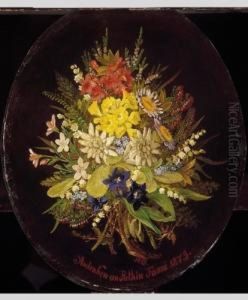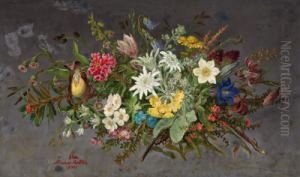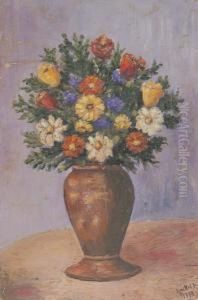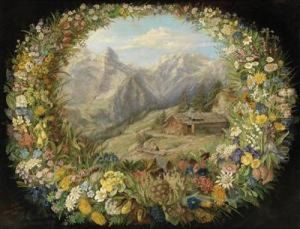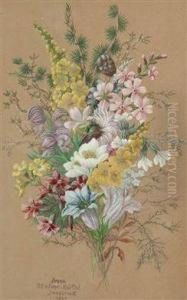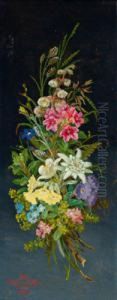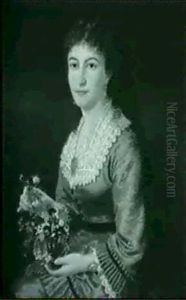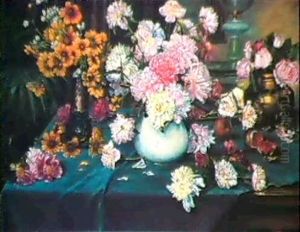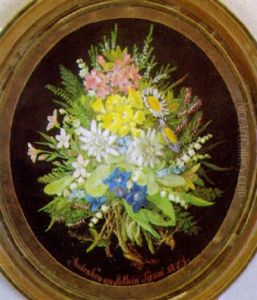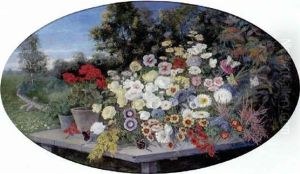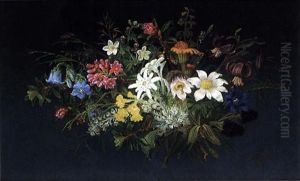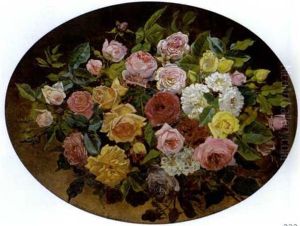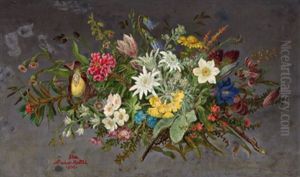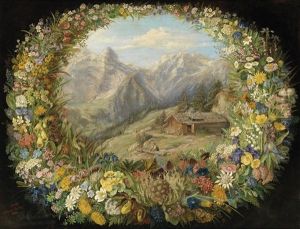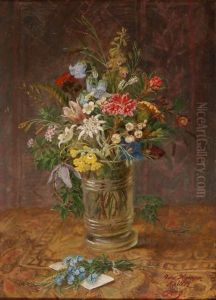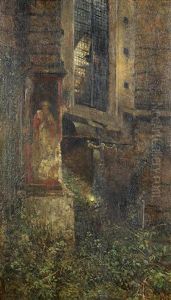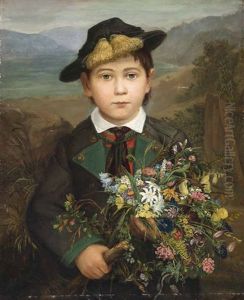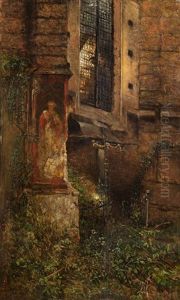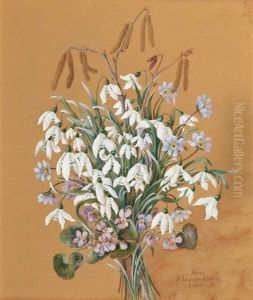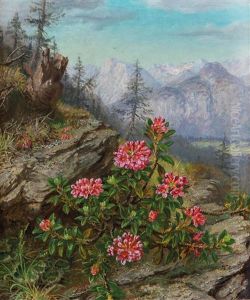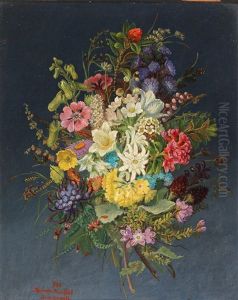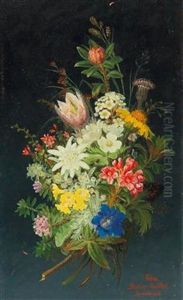Anna Stainer-Knittel Paintings
Anna Stainer-Knittel was an Austrian painter born on July 28, 1841 in the town of Elbigenalp in the Lechtal Alps. Her family was involved in the arts; her father, Johann Baptist Knittel, was a fresco painter, and her brothers also pursued artistic careers. This familial environment nurtured her talent from a young age.
Stainer-Knittel showed a remarkable aptitude for painting, and her skills were recognized early on. She was accepted at the Munich Academy of Fine Arts, a rare achievement for women at the time, and studied there from 1854 to 1857. During her studies, she honed her skills in portrait and flower painting, areas in which she would excel throughout her career.
After her education, Stainer-Knittel returned to her hometown, where she continued to work as an artist. She gained recognition for her detailed and vivid works and was especially known for her botanical illustrations and portraits. Her work was well received, and she earned commissions from various patrons, which allowed her to support herself through her art.
In 1865, she married fellow painter Wilhelm Stainer, and they had four children together. Despite the demands of family life, Stainer-Knittel continued to paint and contribute to the local art scene. Her perseverance as a female artist in a male-dominated field, along with her active participation in the cultural life of her region, made her an important figure in her local community.
Anna Stainer-Knittel's life and career served as an inspiration for the character of Geierwally, a strong-willed alpine heroine of a popular novel by Wilhelmine von Hillern, which was later adapted into several films and plays. Stainer-Knittel's own personality and determination were seen in the character, further cementing her legacy in Austrian culture.
Stainer-Knittel continued to paint and exhibit her works until her later years. She passed away on March 28, 1915, in her hometown, leaving behind a significant body of work that provides insight into the artistic and cultural practices of her time. Her contributions to Austrian art were notable not only for their quality but also for the path they paved for future generations of female artists.
